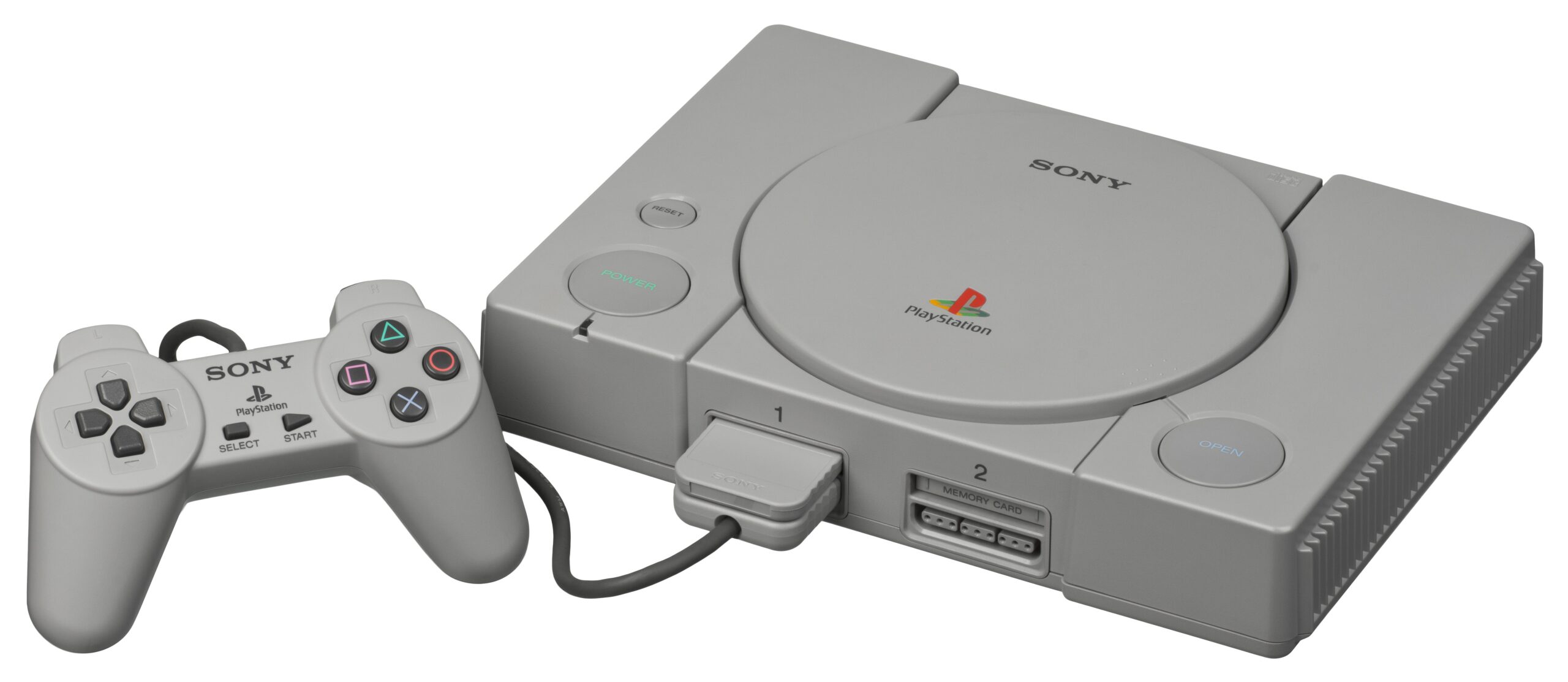On 3 December 2024, the PlayStation 1 celebrates its 30th anniversary, a milestone that provides an opportunity to reflect on the lasting impact the console has had on the world of video games. Launched in 1994, the PS1 was not just a console, but a true symbol of innovation that changed the course of gaming history. With its cutting-edge technology, distinctive design and a catalogue of games that launched some of the most popular sagas of all time, the PS1 paved the way for a new era of video games.
From failure to revolution
The story of the PlayStation began in 1993, when Sony entered into a collaboration with Nintendo to develop a hybrid console that would use CD-ROMs instead of traditional cartridges. Initially called the Nintendo PlayStation, the console was intended to be a new frontier for video games, offering greater storage capacity and advanced graphics. However, due to business disagreements over licensing rights and game distribution, the partnership between the two companies ended unexpectedly. This failure prompted Sony to go its own way and decide to develop its own game console.
This move proved to be crucial, as Sony decided to go down the CD-ROM route, a decision that would become one of the major innovations of the PlayStation 1. Unlike cartridges, CD-ROMs allowed for games with much greater storage capacity, better graphics, more complex music and more intricate storylines, ushering in a new era of video games with much richer and more immersive experiences.
Asking for growing demand
When PlayStation 1 was released, it brought with it a number of technical innovations that revolutionised the game console landscape. In particular, the choice of CD-ROM as the main medium changed the way games were developed and distributed. This decision made it possible to overcome the limitations of the old cartridges and offer games with larger, more complex content and higher visual quality than previous consoles. The increased storage capacity meant that games could include full-motion video, high-quality audio and more complex storylines, creating a much more immersive gaming experience.
In addition, the PS1 was one of the first consoles to make effective use of 3D graphics, with titles taking advantage of the console’s hardware to deliver much smoother and more detailed three-dimensional experiences than had previously been seen. This contributed greatly to the growth and popularity of adventure and role-playing games (RPGs), a genre that would see a huge expansion thanks to the PS1.
Iconic titles and commercial success
The PlayStation 1 spawned some of the most iconic games in video game history, many of which have become true pillars of video game culture. Titles such as Crash Bandicoot, Final Fantasy VII, Gran Turismo and Metal Gear Solid not only defined the late 1990s, but redefined the concepts of gameplay, storytelling and interactivity.
Crash Bandicoot, developed by Naughty Dog, became the face of PlayStation and ushered in a new era of 3D platforms. Final Fantasy VII, produced by Square (now Square Enix), brought Japanese RPGs to a global audience with its epic story and memorable characters. Gran Turismo redefined racing games, offering an incredibly realistic driving simulation for the time. Finally, Metal Gear Solid, developed by Hideo Kojima, became a masterpiece of the stealth genre, with a gripping narrative and revolutionary gameplay mechanics.
The commercial success of PlayStation 1 was extraordinary, with more than 102 million units sold between 1994 and 2006, making it one of the best-selling consoles of all time. The catalogue of games, innovative technology and Sony’s unique approach to marketing helped establish PlayStation as a leading global brand.
Controller design and iconic details
The PlayStation 1 controller has become an iconic symbol in the world of video games. Unlike traditional controllers with simpler designs, the PS1 controller featured a series of distinctive symbols: the triangle, square, circle and cross. Each symbol had a meaning: the triangle indicated direction, the square referred to menus, and the circle and cross were the ‘yes’ and ‘no’ buttons. These symbols became a hallmark of PlayStation, and their placement and use in games was instrumental in creating an intuitive and immediate gaming experience.
It is also interesting to note that in Western countries, the functions of these buttons were reversed from those used in Japan, creating a distinction in interaction that remains part of the history of PlayStation controllers.
What remains of Playstation One
PlayStation 1 had a cultural impact far beyond its commercial success. With its ability to deliver innovative and immersive gaming experiences, it paved the way for a shift in the perception of video games from a pastime to a true form of mass entertainment. The console attracted a large and diverse audience, from casual gamers to hardcore gamers, helping to grow the entire video game industry.
The PS1 also had a profound impact on technology and game development, encouraging companies to invest in more sophisticated hardware and software. It also helped internationalise the industry, bringing Japanese games to Western audiences and demonstrating the power of games as a global cultural medium.
Today, 30 years after its launch, PlayStation 1 is still remembered as a console that changed the course of the video game industry. Its technological innovations, controller design and catalogue of games continue to influence modern consoles. The PS1 remains a landmark, a symbol of how innovation can transform not just a market, but a culture.









